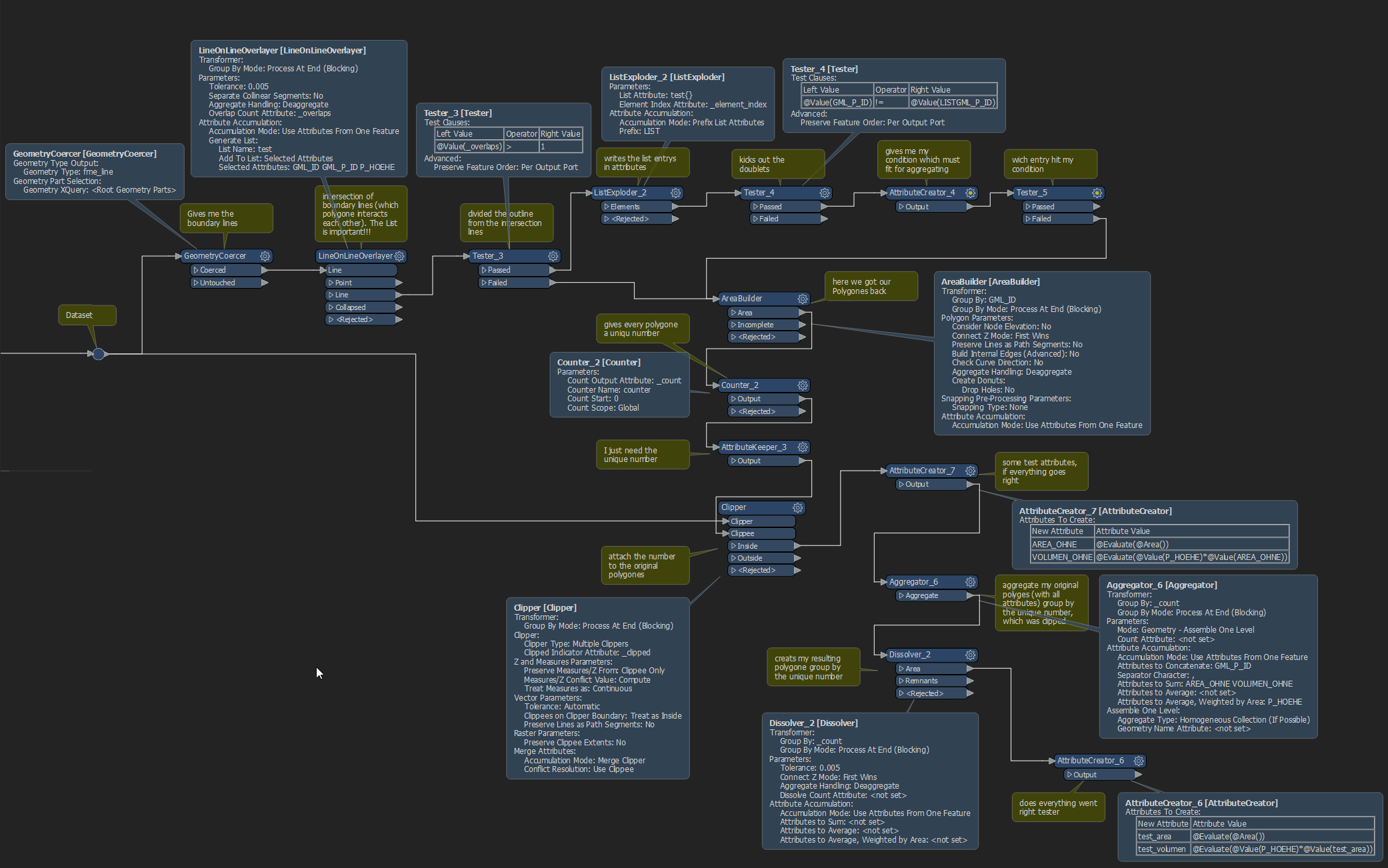Hello there,
I am trying to aggregat neighborhood polygones (they need to touch or intersect each other) grouped by their ID with the condition, that the value of a specific attribute from the neighbor polygone needs to be in the range of +-10% of the „motherpolygones" value.
In addition, I need to use the „Attributes to Average, Weighted by Area“ attribute accumulation setting from the aggregator. This option isn’t available in the neighborhoodaggregator. Also the "Attributes to Concatenate" option is necessary.
In words the Transformer should do this:
"If the polygones has the same ID and touches or intersect each other and the value of the attribute AA is in range of +-10% aggregat them. Weight the BB attribute by area and concatenate the attribute CC."
Does someone has an idea?
best regards,
knigge







 and the couples are right in front of my eyes!
and the couples are right in front of my eyes!

